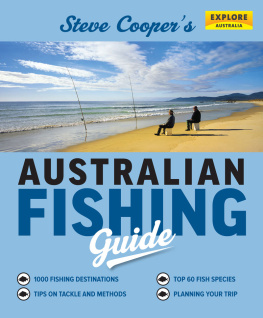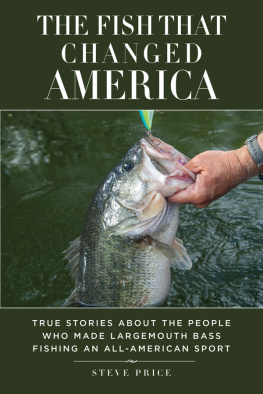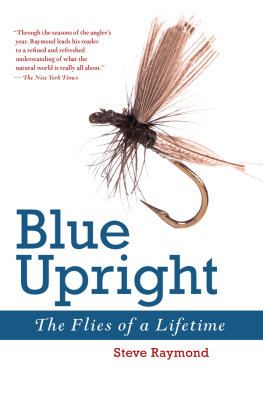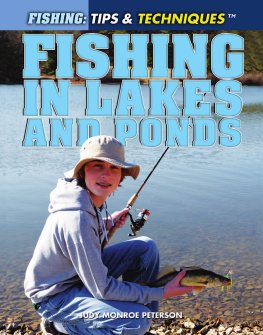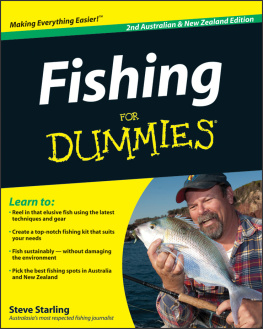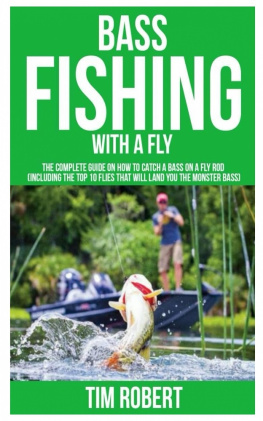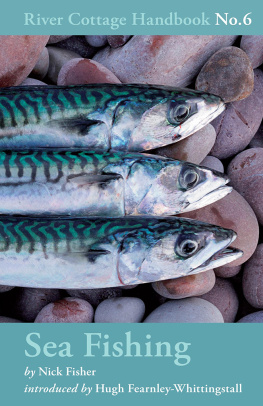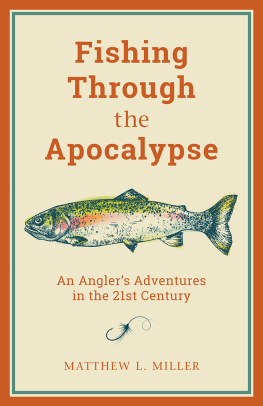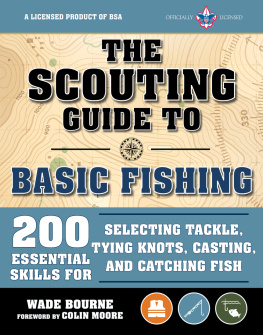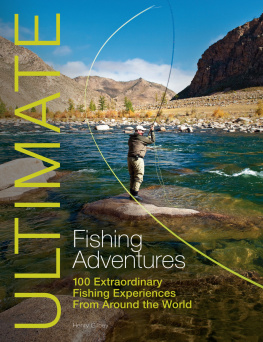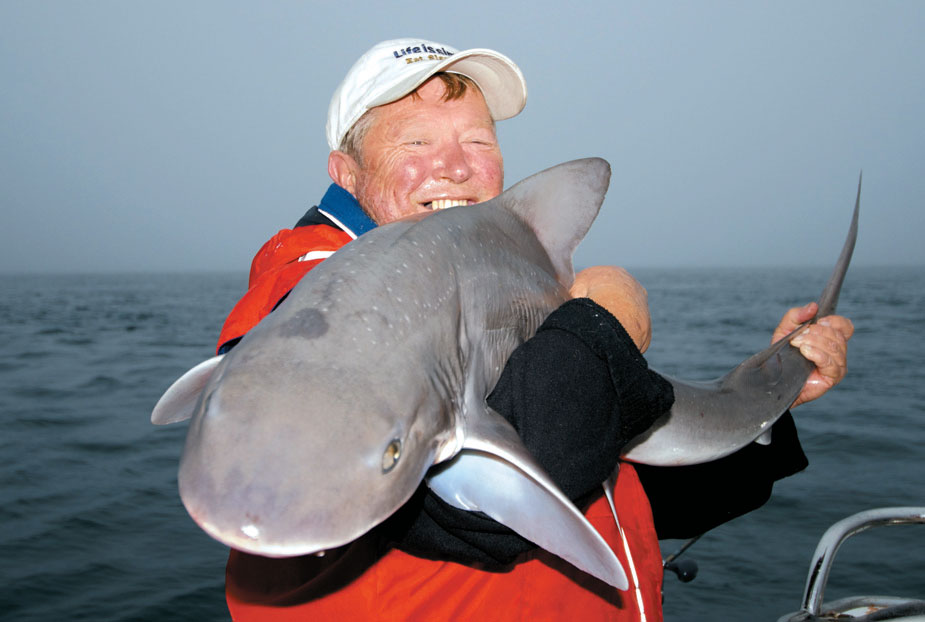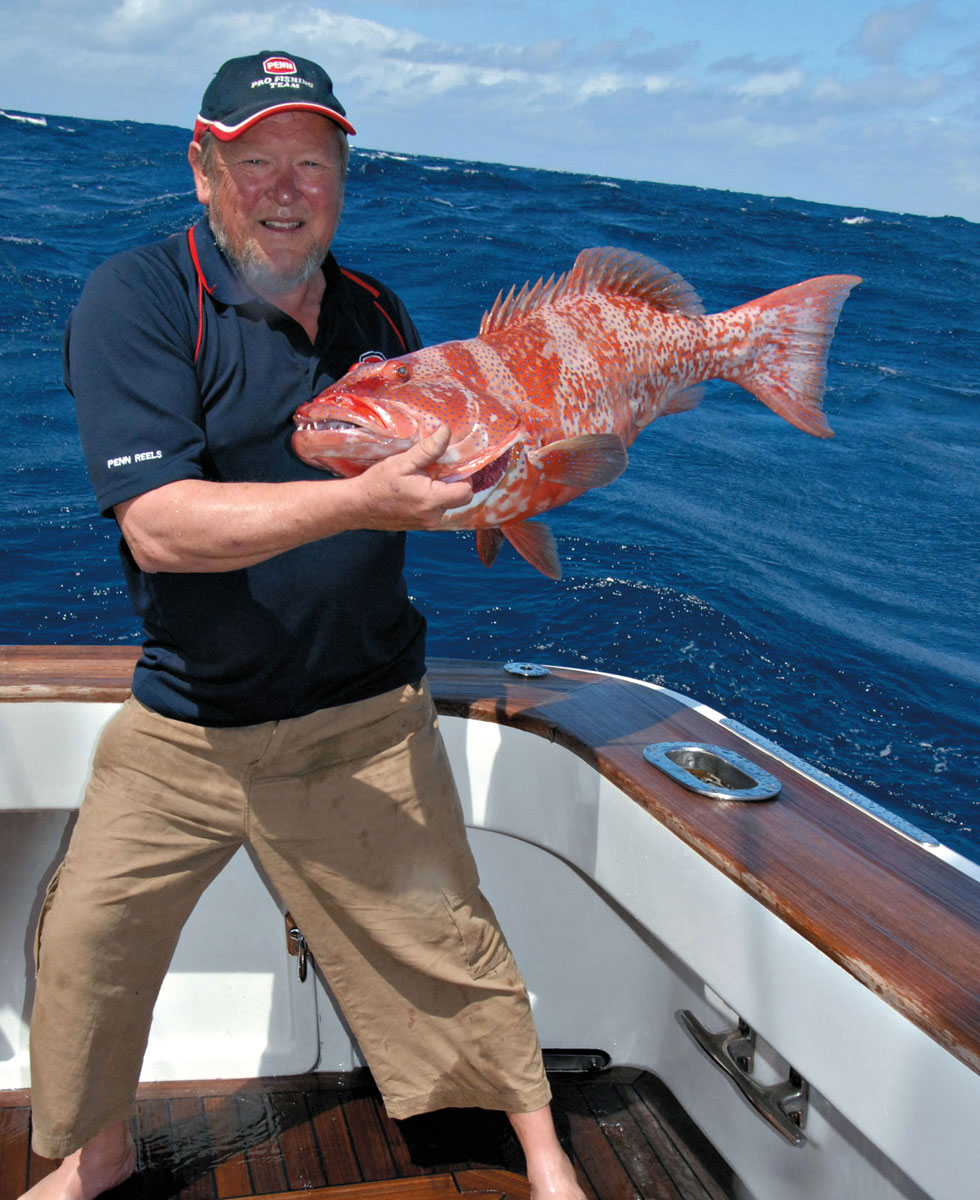For Robert and Hilary, who encouraged me to write
CONTENTS
BEFORE YOU DROP A LINE
Rock-fishing
, Lithgow to Mudgee
, Gunnamatta Bay
, Lake Wonboyn
, Balranald
, Nariel Creek
, Fort Courage
Lake Burley Griffin
, Ninety Mile Beach
, Lake Victoria
, Tarwin River/Venus Bay
, Snapper spots
Cape Schanck
, Patterson River
, Portarlington
, Barwon River estuary
, Warrnambool
, Nelson
, Kerang Lakes
, Lake Buffalo
, Port Broughton
, Neptune Islands
, Perth
, Dampier
, Broome
, Manton Dam
, Blyth River
, East Alligator River
, Swim Creek
, Trevally Alley
, Lake Wivenhoe
, Lake Lenthall
, Lake Callide
, Pioneer River
, Lake Tinaroo
, Channel Country
, Twin Lakes
, Flinders Island
INTRODUCTION
Nobody I have met can truthfully say they have fished everywhere in Australia. It is too vast a continent with far too many angling opportunities to experience in one lifetime. When historian Professor Geoffrey Blainey coined the phrase the tyranny of distance about geographys role in shaping Australia, he could have been writing about fishing in this great land.
I will never be able to fish all the places I would like to visit. But I will have fun trying.
I have been lucky, though, enjoying a variety of fishing destinations in every state, and so Ive packed this book with hundreds of my favourite places. It includes descriptions of locations and facilities, GPS references, lists of species found at each spot, tips and techniques, tackle advice and, of course, some great fishing yarns.
Fishing success at many of these destinations was achieved with the help of local knowledge. If you are heading to an area you know little about, consider spending a day on the water with a fishing guide the investment will set you up for the rest of your stay.
Many places I have visited are not listed. Some were left out because I am not yet prepared to write about them in several instances, this comes down to promising not to reveal the details. Youll have to discover them on your own.
According to the Australian Bureau of Statistics, there are more than five million anglers in Australia. The recreational fishing industry employs more than 100 000 people, providing significant numbers of jobs in coastal and regional areas, in the tackle, boating, tourism, fishing charter and associated industries.
Despite the size of the recreational fishing industry, the bureau says most angling effort takes place along the coast and estuaries of Queensland, New South Wales and Victoria, reflecting both the excellent fishing areas and the geographic spread of Australias population.
Steve Cooper with the catch of the day.
So, the good news is that beyond the east coast and the estuaries, our country has vast areas with little fishing pressure, and the adventurous angler has a wealth of opportunities to explore.
Why arent you out there already?
Travel safely,
Steve Cooper
As well as all my fellow anglers mentioned throughout the book, Id particularly like to thank Rod Harrison, Rod Mackenzie, Emma George, Al McGlashan, Roger Butler, Cam Whittam, Dom Domagala, Bob Hart, Bob McPherson, Michael Cooper, Gary Fitzgerald and Brendan Wing for their photographs and information. I also received assistance from tourism operators and some fishing guides.
Steve Cooper with a coral trout he caught while jigging lures on a seamount about 40 miles offshore from , Queensland.

FAVOURITE FIVE DESTINATIONS FOR BAY FISHING
Main fish species: snapper
Main fish species: golden trevally, mackerel tuna, longtail
Main fish species: bream, flathead, squid
Main fish species: snapper, King George whiting
Main fish species: yellowtail kingfish, tailor, salmon, bonito
Main fish species: snapper, King George whiting, gummy sharks
Bays are the most popular destination for saltwater anglers. Most bays are an estuary extension and may be broad, like Port Phillip Bay, but they attract a host of similar species. When the wind blows, unlike being off shore, you can usually find somewhere to fish in the lee, out of the rough water. Many anglers take comfort knowing that the water is relatively calm and the shore isnt so far away. Such conditions are ideal for parents wanting to introduce children to fishing.
Bay fishing popularity can best be judged on weekends, holidays or during major fish migrations. During these times boat ramps and piers can become crowded. Boat ramps sometimes have long queues of cars and boat trailers, and on piers it can be standing room only when word is out of a hot bite. Although a boat gives more options, because it allows anglers to cover more water, it is not a prerequisite for success there are times when boats are not as good as piers, breakwalls or beaches. Regardless of platform, you still have to catch the fish.
Like many southerners, I was always under the belief that anglers in the northern half of the country spent most of their fishing time chasing blue-water pelagics. However, when you go north you find most anglers fish for bottom species using similar methods to southern anglers. I have been to areas noted for their mackerel, GTs (giant trevally) and golden trevally, and even marlin, yet the fishing scene is dominated by small boats anchored up near channels and reefs. Many are fishing for southern mainstays like flathead, squid, whiting and snapper. There is no doubt that the sizzle of fresh fish fillets rates more highly with most anglers than the adrenalin rush of a high-speed pelagic.
Bay fishing is dominated by bread and butter species. In temperate waters fish such as bream snapper, flathead, mullet, whiting and squid are popular. As you head north, you find more anglers bottom bouncing for sand whiting, fingermark, dusky flathead and yellowfin bream than seeking out pelagic species like tuna or mackerel. You find anglers hooking a mix of pelagic and estuary fish because bays are estuary extensions. In Sydney Harbour, anglers catch good numbers of yellowtail kingfish and bonito, as well as bream; Hervey Bay has runs of mackerel and tuna, as well as whiting and squid; Trinity Inlet at Cairns produces bream, giant trevally and barramundi. In Port Phillip Bay, yellowtail kingfish are caught at the southern end of the bay during summer, while snapper, whiting and bream are caught in good numbers elsewhere in the bay.
Water depth and terrain are the controlling factors for species. When fishing for browsers like whiting and bream in Port Hacking, much of the fishing took place in water less than 3 m deep, and sometimes as shallow as 1 m. In deeper parts of the same bay, more than 5 m, squid, mulloway and dusky flathead were caught.

